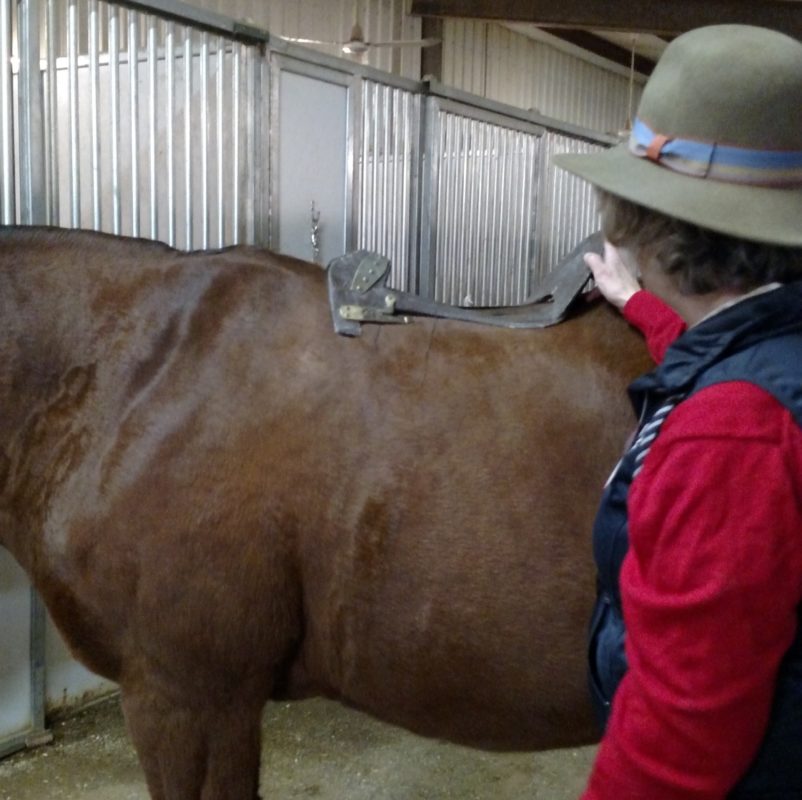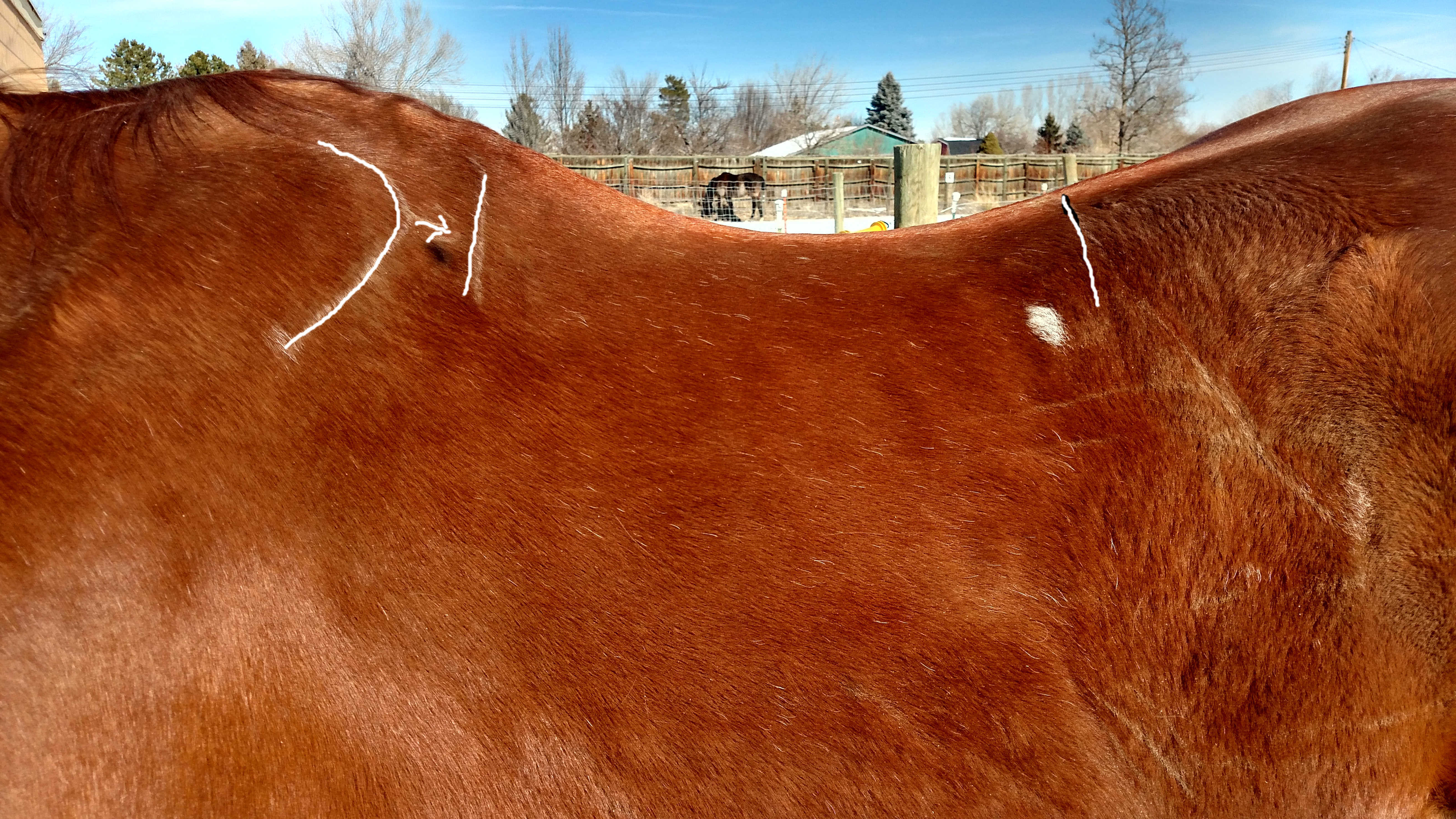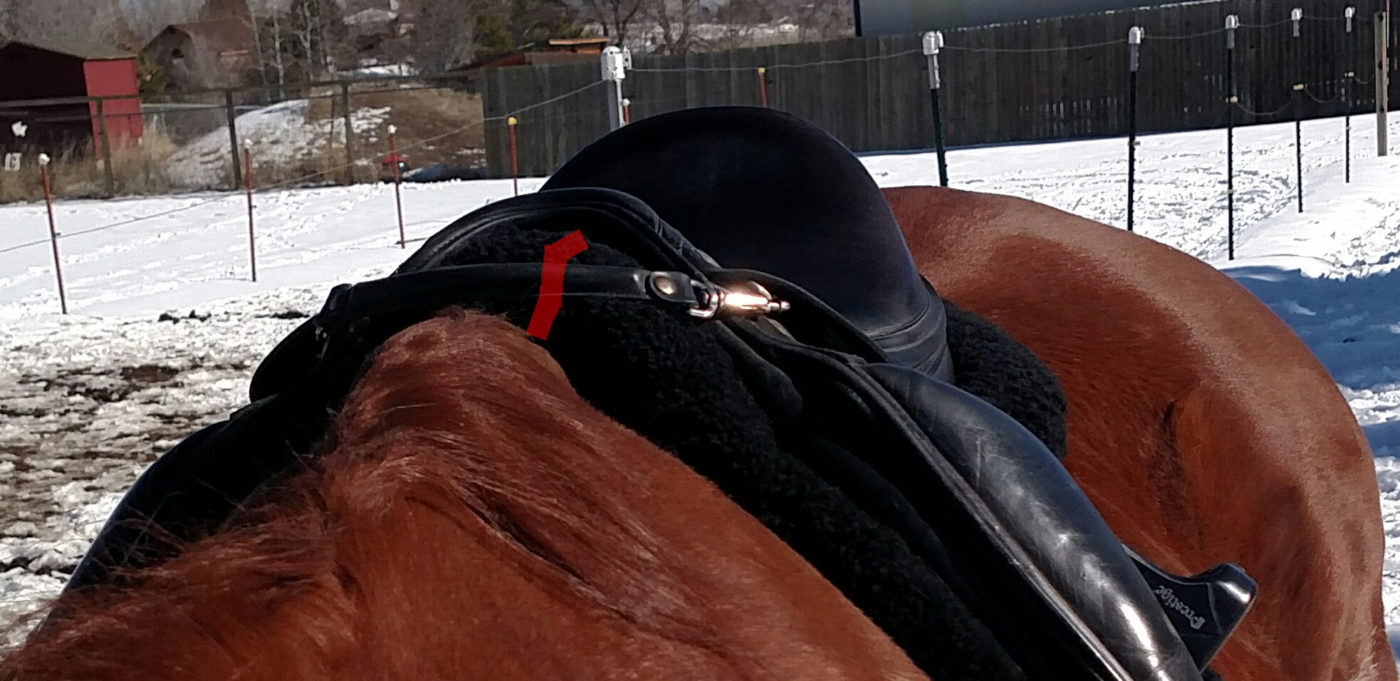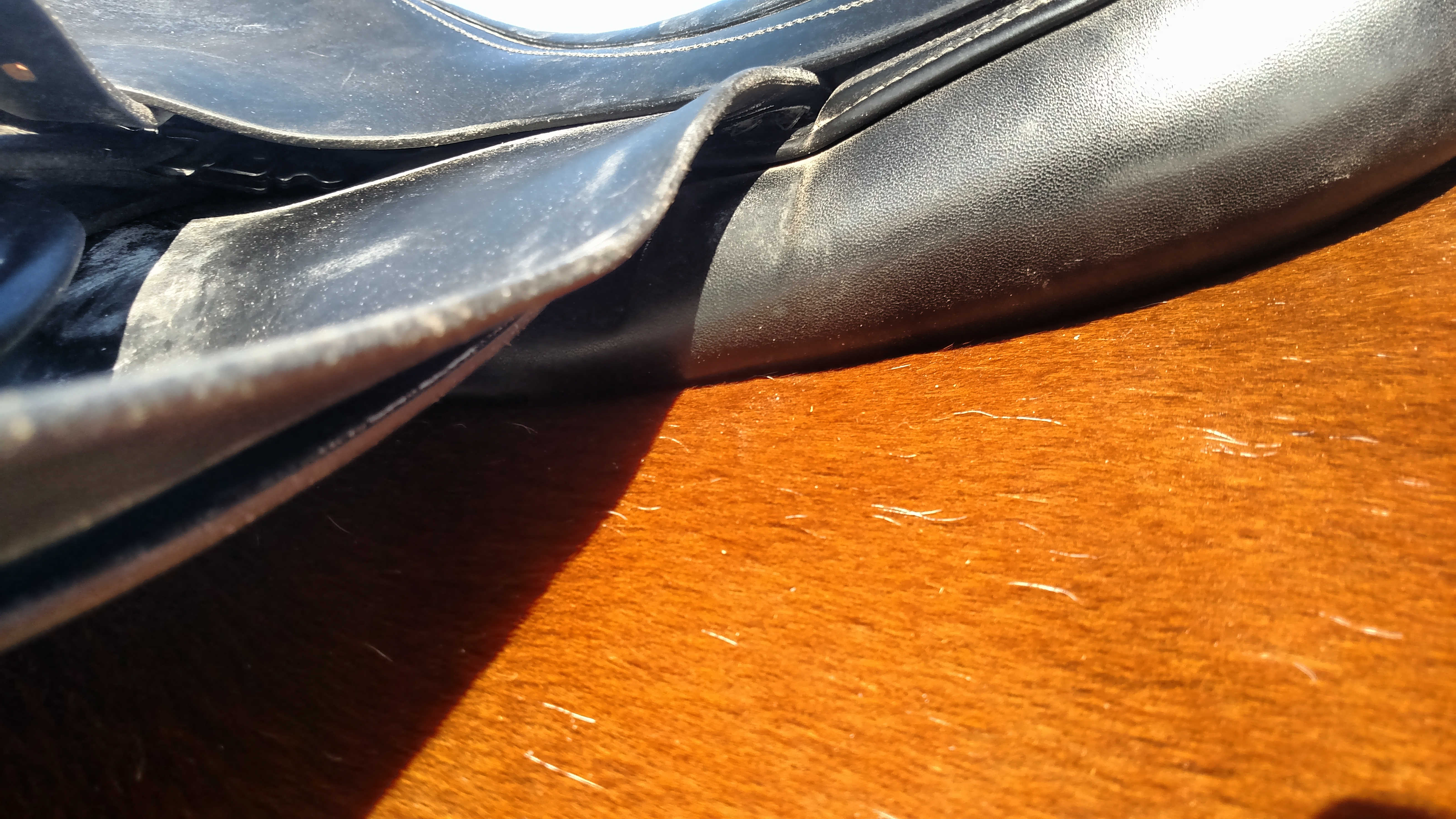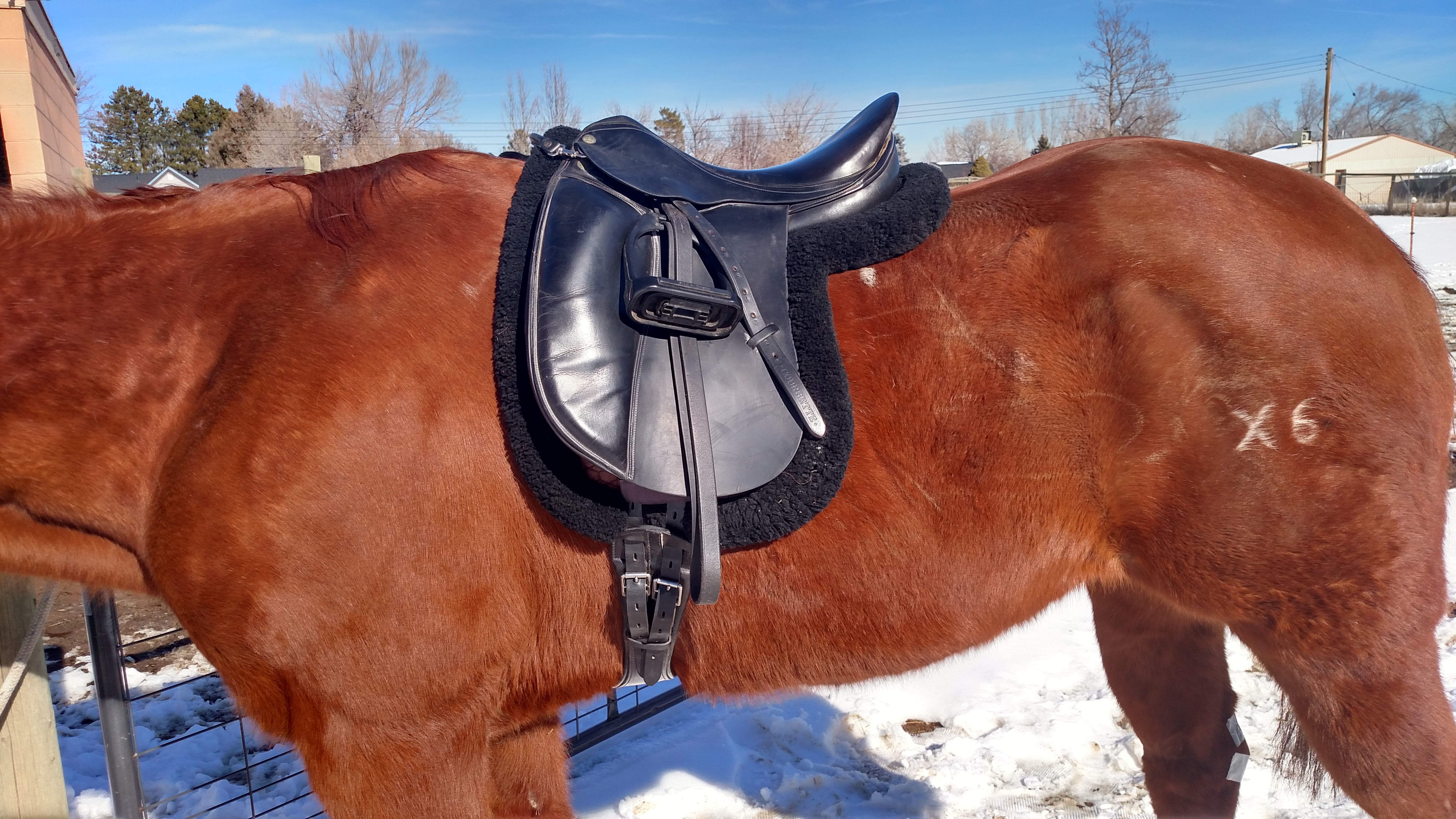Saddles, Uncategorized
Fitting Saddles to Older Horses
As horses age, have layoffs from work or have conformational issues, the back can drop (sway) making fitting saddles tricky. I often hear these saddle fitting queries prefaced with “I’m not riding my horse very hard” or “I’m not showing” but the reality is when we have a less developed topline and abdominal muscles, it is even MORE important to fit the saddle very well. Sometimes that means using a different saddle and sometimes that means modifying the existing saddle. Very seldom will saddle pads of any sort solve the problem. The tree (internal structure) of the saddle must fit and the balance must be correct. Let’s break it down into the most important pieces.
Looking at the horse’s back, first note the shape of the shoulder blade and where the scapula rotates back to when the knee is raised. Then note where the last rib is. Mark these with chalk as I have in the following photo. This is the space you have to work with.
In the first photo note how the tree sits correctly on the horse’s back. We are often looking for a tree with some curve it in from the front to the back. If the horse’s back is very dropped or swayed, additional lift can be provided in the back of the panel if there is room or an additional piece can be added between the tree and the panel.
In checking your existing saddle follow the same guidelines on our saddle fitting page. Here are a few photos to follow the fitting of this particular 27 year old Quarter Horse who is ridden very lightly.
Check the gullet space above the wither so that there is at least 1.5 inches in height all through the saddle between the spine and saddle as well as twice the width of the spine. Make sure the saddle sits straight along the spine checking from the back.
Check the contact of the panel on both sides by using one hand to put pressure on the seat of the saddle and the other hand to slide your fingertips along the contact of the saddle (panel) with the horse’s back. There should be no gaps anywhere along the panel and pay particular attention to the contact under the stirrup bar area making sure there are no gaps or areas of more pressure.
In this final shot, notice that the seat of the saddle is balanced so that the deepest part of the seat is over the center of balance of the horse, the girth is a hands width with the thumb behind the elbow and we are using a sheepskin pad to add some cushioning.
This is Bosco, a loved family member, my husband’s horse and the sweetest horse I’ve know. He’s been in our family since he was 6 yo. Keeping him comfortable is our goal and in return he keeps his rider safe.

